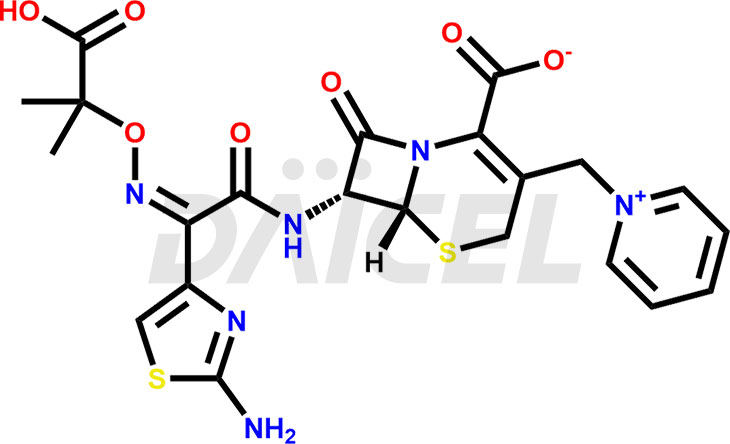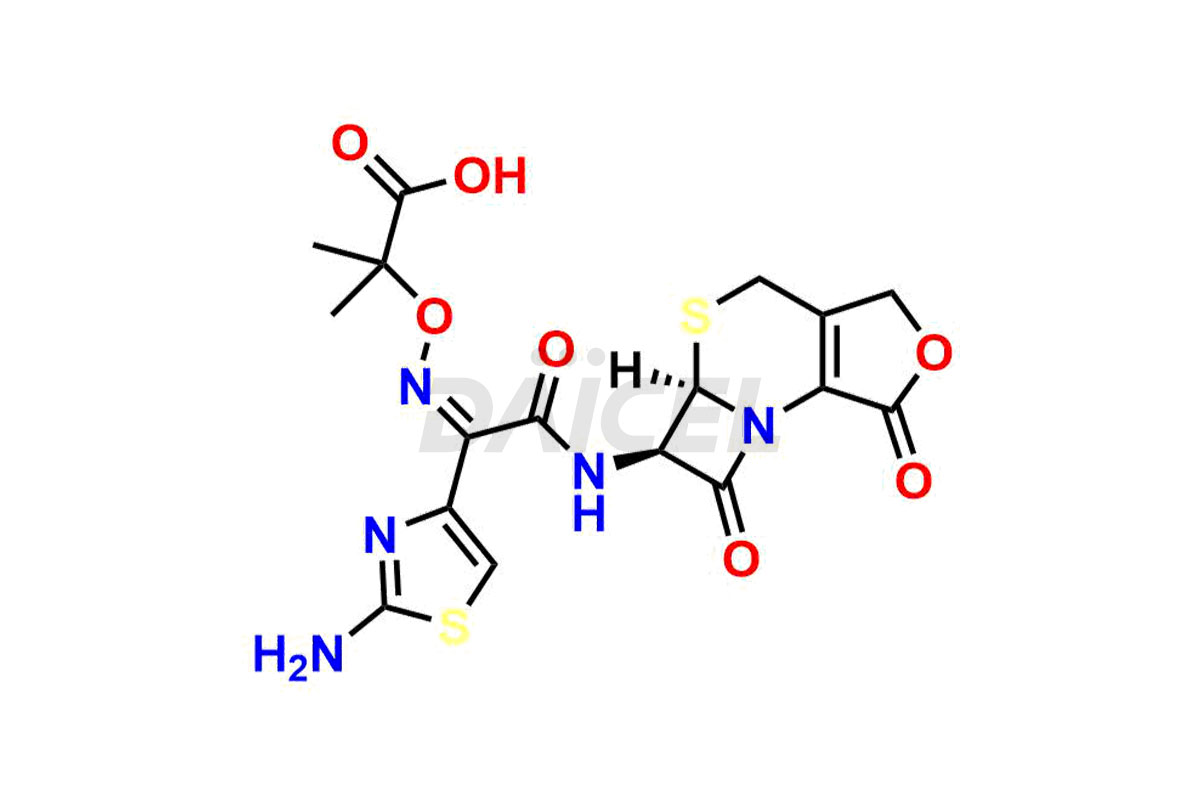Ceftazidime
General Information
Ceftazidime Impurities and Ceftazidime
Daicel Pharma synthesizes high-quality Ceftazidime impurities, Ceftazidime EP impurity G, and Desacetylceftazidime Lactone Impurity, which are crucial in the analysis of the quality, stability, and biological safety of the active pharmaceutical ingredient Ceftazidime. Moreover, Daicel Pharma offers custom synthesis of Ceftazidime impurities and delivers them globally.
Ceftazidime [CAS: 72558-82-8] is a third-generation, semi-synthetic, broad-spectrum cephalosporin antibiotic for treating many bacterial infections.
Ceftazidime: Use and Commercial Availability
Ceftazidime is an antibiotic used to treat many bacterial infections caused by susceptible organisms, including respiratory, skin, urinary tract, bone and joint, gynecologic, intra-abdominal, and central nervous system infections. Its combination with other medicines treats complicated intra-abdominal infections, complicated urinary tract infections, and hospital-acquired and ventilator-associated bacterial pneumonia. The antibiotic is available as an injection under various brand names such as Ceptaz, Fortaz, Pentacef, Tazidime, and Tazicef.
Ceftazidime Structure and Mechanism of Action 
The chemical structure of Ceftazidime is 1-[[(6R,7R)-7-[[(2Z)-2-(2-amino-4-thiazolyl)-2-[(1-carboxy-1-methylethoxy)imino]acetyl]amino]-2-carboxy-8-oxo-5-thia-1-azabicyclo[4.2.0]oct-2-en-3-yl]methyl]- Pyridinium. Its chemical formula is C22H22N6O7S2, and its molecular weight is approximately 546.6 g/mol.
Ceftazidime inhibits enzymes responsible for bacterial cell wall synthesis. It is active against gram-positive organisms. Further, it is active against the strains of organisms resistant to ampicillin and other cephalosporins.
Ceftazidime Impurities and Synthesis
Ceftazidime synthesis1 may result in the formation of impurities. Some impurities of Ceftazidime are related to the starting materials, reagents, or intermediates used during preparation. These impurities may include diastereoisomers, degradation products, and related substances. Manufacturers should ensure to control and minimize impurity formation so that Ceftazidime meets regulatory requirements for safety and efficacy.
Daicel offers a Certificate of Analysis (CoA) from a cGMP-compliant analytical facility for Ceftazidime impurity standards, Ceftazidime EP impurity G, and Desacetylceftazidime Lactone Impurity. The CoA includes complete characterization data, such as 1H NMR, 13C NMR, IR, MASS, and HPLC purity2,3. We also provide 13C-DEPT and CHN on request. We give a complete characterization report on delivery. Daicel has the technology and expertise to prepare any unknown Ceftazidime impurity or degradation product.
References
FAQ's
References
- O'Callaghan, Cynthia Hilda; Livermore, David George Hubert; Newall, Christopher Earle, (6R,7R)-7-[(Z)-2-(2-Aminothiazol-4-yl)-2-(2-carboxyprop-2-oxyimino)acetamido]-3-(1-pyridiniummethyl)-ceph-3-em-4-carboxylate and salts thereof, Glaxo Group Ltd., United Kingdom, US4258041A, March 24, 1981
- Ayrton, J., Assay of ceftazidime in biological fluids using high-pressure liquid chromatography, Journal of Antimicrobial Chemotherapy, Volume: 8, Issue: Suppl. B, Pages: 227-31, 1981
- Yost, Richard L.; Derendorf, Hartmut, Rapid chromatographic determination of cefotaxime and its metabolite in biological fluids, Journal of Chromatography, Biomedical Applications, Volume: 341, Issue: 1, Pages: 131-8, 1985
Frequently Asked Questions
How can Ceftazidime impurities be identified?
Various analytical techniques, including high-performance liquid chromatography (HPLC), liquid chromatography-mass spectrometry (LC-MS), etc., identify the impurities of Ceftazidime.
How can Ceftazidime impurities be minimized during storage and transportation?
Impurities in Ceftazidime are minimized during storage and transportation by controlling temperature, humidity, and light exposure and using appropriate packaging materials.
Which solvent is for the analysis of Ceftazidime impurities?
Methanol is the solvent for analyzing most of the Ceftazidime impurities.
What are the temperature conditions required to store Ceftazidime impurities?
Ceftazidime impurities should be stored at a controlled room temperature between 2-8 ⁰C or as indicated on the Certificate of Analysis (CoA).
Note: Products protected by valid patents by a manufacturer are not offered for sale in countries having patent protection. The sale of such products constitutes a patent infringement, and its liability is at the buyer's risk.



